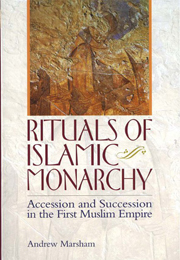Book contents
- Frontmatter
- Contents
- List of maps and figures
- Acknowledgements
- Map 1
- Map 2
- Map 3
- INTRODUCTION
- PART I LATE ANTIQUE ARABIA AND EARLY ISLAM (c. 550–c. 660)
- INTRODUCTION
- 1 ALLIANCE AND ALLEGIANCE IN PRE-ISLAMIC ARABIA
- 2 THE VERB BĀYAcA IN THE QURɔĀN: ALLEGIANCE TO MUḤAMMAD
- 3 THE OATH OF ALLEGIANCE IN THE ‘CONQUEST SOCIETY’ (c. 628–c. 660)
- PART II THE UMAYYAD CALIPHATE (c. 660–750)
- PART III THE EARLY ABBASID CALIPHATE (c. 750–809)
- PART IV THE MIDDLE ABBASID CALIPHATE (809–865)
- CONCLUSION
- Genealogical table of Quraysh
- Genealogical table of the Abbasid caliphs
- Bibliography
- Index
1 - ALLIANCE AND ALLEGIANCE IN PRE-ISLAMIC ARABIA
from PART I - LATE ANTIQUE ARABIA AND EARLY ISLAM (c. 550–c. 660)
Published online by Cambridge University Press: 05 September 2013
- Frontmatter
- Contents
- List of maps and figures
- Acknowledgements
- Map 1
- Map 2
- Map 3
- INTRODUCTION
- PART I LATE ANTIQUE ARABIA AND EARLY ISLAM (c. 550–c. 660)
- INTRODUCTION
- 1 ALLIANCE AND ALLEGIANCE IN PRE-ISLAMIC ARABIA
- 2 THE VERB BĀYAcA IN THE QURɔĀN: ALLEGIANCE TO MUḤAMMAD
- 3 THE OATH OF ALLEGIANCE IN THE ‘CONQUEST SOCIETY’ (c. 628–c. 660)
- PART II THE UMAYYAD CALIPHATE (c. 660–750)
- PART III THE EARLY ABBASID CALIPHATE (c. 750–809)
- PART IV THE MIDDLE ABBASID CALIPHATE (809–865)
- CONCLUSION
- Genealogical table of Quraysh
- Genealogical table of the Abbasid caliphs
- Bibliography
- Index
Summary
Alliance and allegiance in ancient Arabia The Greek geographer and historian Herodotus (d. c. 425 BCE) wrote the first ethnographic account of oath-taking for alliance among Arabians:
No nation regards the sanctity of a pledge (pistis) more seriously than the Arabs (arabioi). When two men wish to make a solemn compact, they get the service of a third, who stands betweeen them and with a sharp stone cuts the palms of their hands near the base of the thumb; then he takes a little tuft of wool from their clothes, dips it in their blood and smears the blood on seven stones which lie between them, invoking as he does so, the names of Dionysius and Urania; then the person who is giving the pledge, commends the stranger (xeinos) – or fellow citizen (astos) as the case may be – to his friends (philoi), who in their turn consider themselves equally bound to honour it. The only gods the Arabs recognise are Dionysius and Urania; the way they cut their hair – all round in a circle, with the temples shaved – is, they say, in imitation of Dionysius. Dionysius in their language is Orotalt, and Urania, Alilat.
The arabioi that Herodotus describes were probably pastoral nomads in the Sinai or the Negev in c. 440 BCE. These northern marches, like most of the Arabian Peninsula to the south, had an ecology that could be exploited only by nomadic pastoralists.
- Type
- Chapter
- Information
- Rituals of Islamic MonarchyAccession and Succession in the First Muslim Empire, pp. 24 - 39Publisher: Edinburgh University PressPrint publication year: 2009



